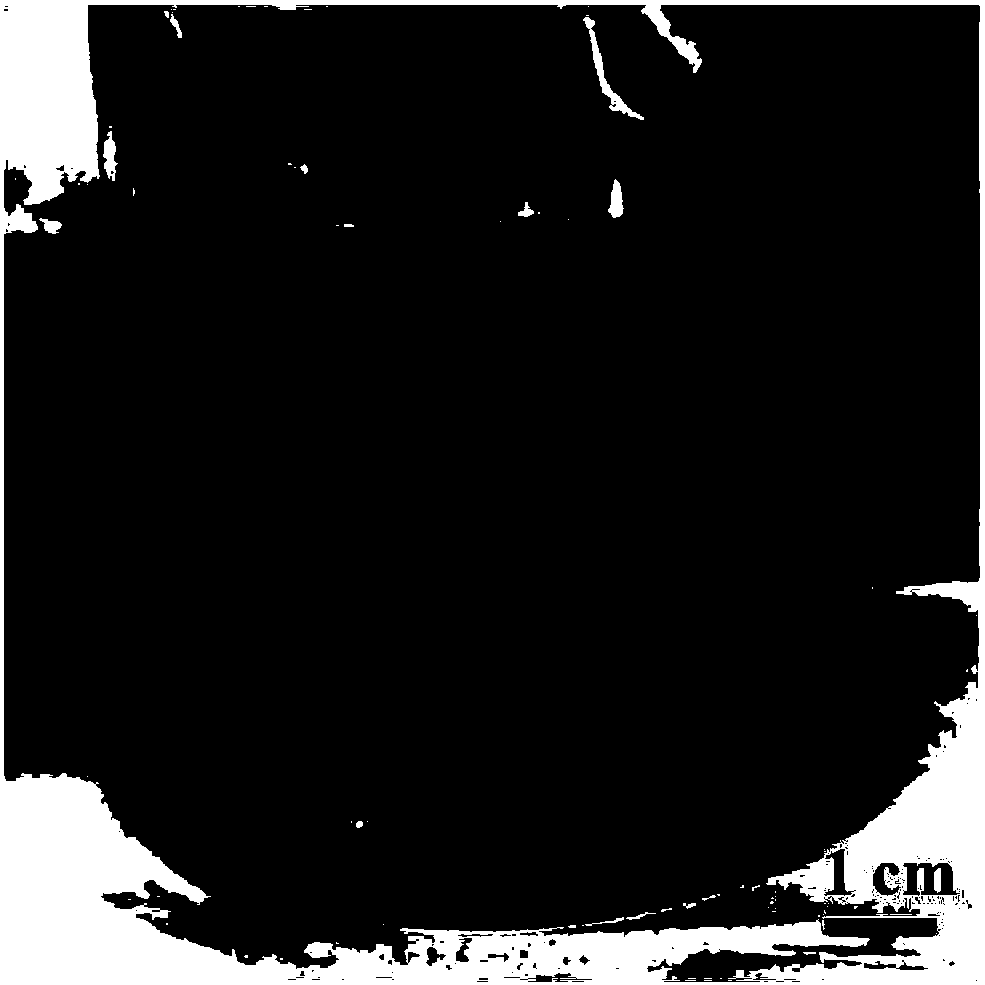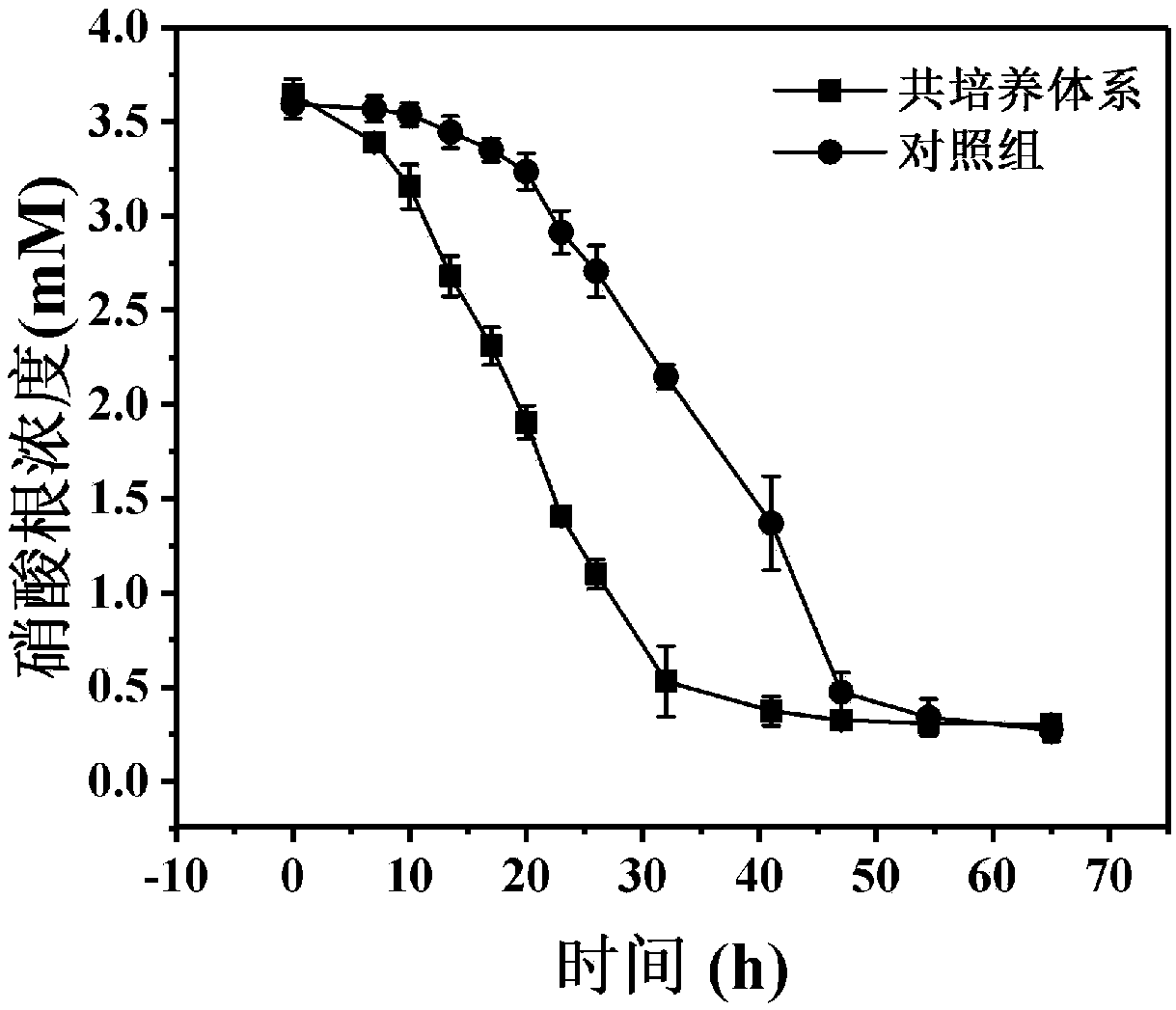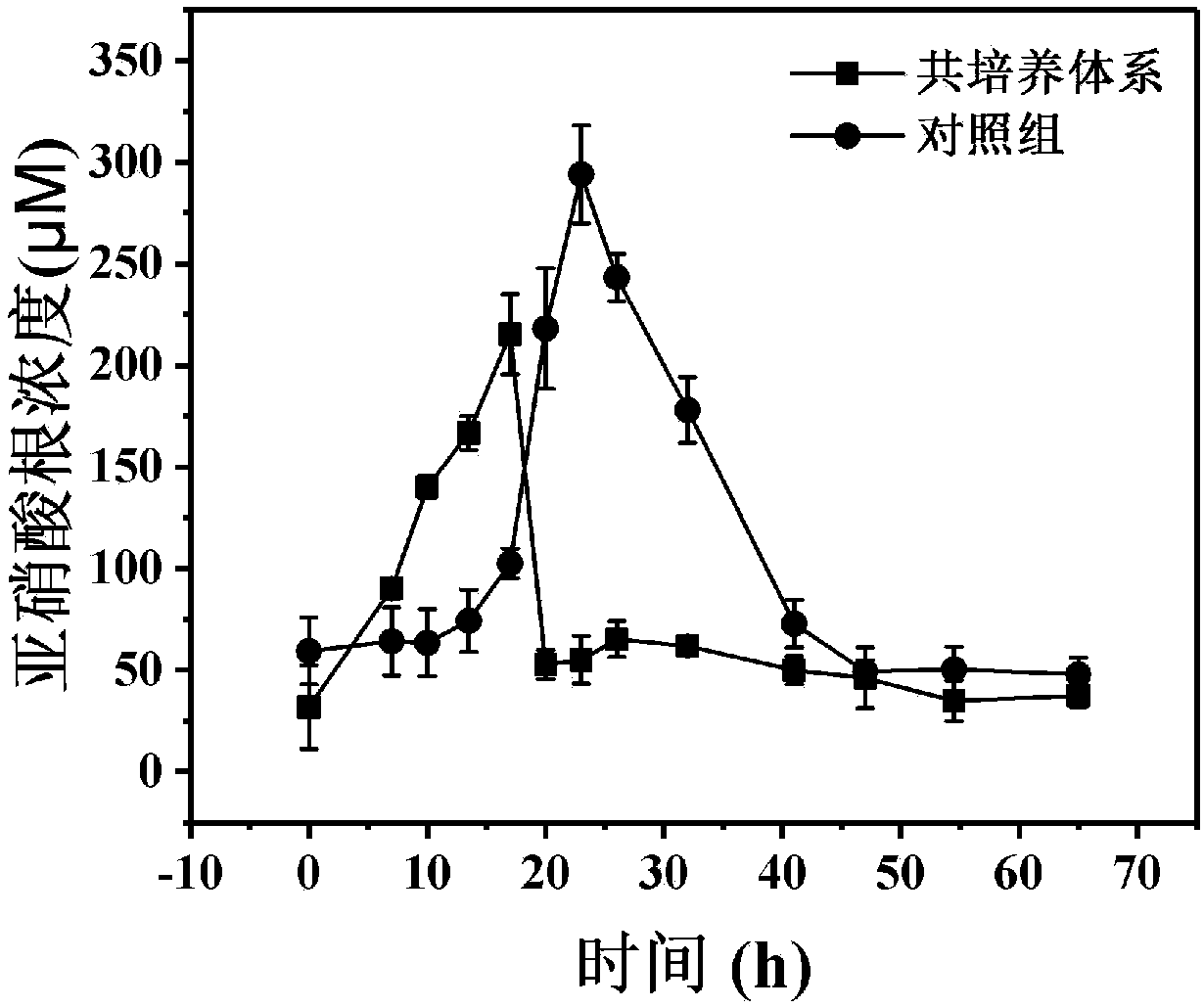Method for promoting stable and rapid implementation of denitrification process through microorganism co-culture
A technology of co-cultivation and denitrification, applied in the field of biological denitrification, can solve problems such as lag, and achieve the effects of low cost, obvious removal effect, and no accumulation of nitrite.
- Summary
- Abstract
- Description
- Claims
- Application Information
AI Technical Summary
Problems solved by technology
Method used
Image
Examples
Embodiment 1
[0026] Example 1: A method for co-cultivating microorganisms to promote the denitrification process to proceed stably and rapidly
[0027] In view of the change of oxygen-containing conditions and substrates, denitrifying bacteria need a period of time to adapt to the new environment, and the denitrification process lags behind. Aiming at this problem, the present invention proposes the co-cultivation technology of domesticated denitrifying bacteria and G.sulfurrenducens to solve the problem, and utilizes microbiology and microscope imaging technology to conduct mechanism analysis to realize the stable and rapid denitrification process. The specific steps of the co-culture method are as follows:
[0028] 1) Construction of co-cultivation system;
[0029] The denitrifying bacteria were obtained by domesticating the sludge with methanol under aerobic conditions in advance, and the composition of the domestication medium was: Na 2 HPO 4 0.8g / L, CaCl 2 0.1g / L,FeSO 4 ·7H 2 O ...
Embodiment 2
[0036] Example 2: Under different carbon-nitrogen ratios, a method for the co-cultivation of microorganisms to promote the stable and rapid denitrification process
[0037] In view of the uncertainty of the carbon-nitrogen ratio of sewage under different conditions, in view of this problem, it is proposed that the co-cultivation of denitrifying bacteria and G.sulfurrenducens under different carbon-nitrogen ratios can promote the stable and rapid denitrification process.
[0038] The specific steps of the co-culture method are as follows:
[0039] 1) Construction of co-cultivation system;
[0040]The denitrifying bacteria were obtained by domesticating the sludge with methanol under aerobic conditions in advance, and the composition of the domestication medium was: Na 2 HPO 4 0.8g / L, CaCl 2 0.1g / L,FeSO 4 ·7H 2 O 0.07g / L, MgSO 4 ·7H 2 O 0.1g / L. Methanol 20 millimoles, nitrate 3-9 millimoles, the domesticated communities are mainly Delftia, Methyllobacillus, Diaphorobacter...
PUM
 Login to View More
Login to View More Abstract
Description
Claims
Application Information
 Login to View More
Login to View More - R&D
- Intellectual Property
- Life Sciences
- Materials
- Tech Scout
- Unparalleled Data Quality
- Higher Quality Content
- 60% Fewer Hallucinations
Browse by: Latest US Patents, China's latest patents, Technical Efficacy Thesaurus, Application Domain, Technology Topic, Popular Technical Reports.
© 2025 PatSnap. All rights reserved.Legal|Privacy policy|Modern Slavery Act Transparency Statement|Sitemap|About US| Contact US: help@patsnap.com



